Leaderboard
Popular Content
Showing content with the highest reputation on 05/24/24 in Posts
-
I was writing it down at the FFB topic, but this topic is more related. So sorry to all of you who will read it twice: To HeatBlur Hello. I'm participating as a test pilot and some kind of expert in the FFBeast project. It all started more than 3.5 years ago, but the devices are only now getting ready to be delivered to the first customers. We made significant progress by understanding the necessity of a wide range of feedback forces required for correct simulation and implementing them into our products. At this moment, some versions can produce about 60 pounds of force, which makes them a perfect fit for use with the Phantom. I have been talking to other people about how important it is to have such devices. Coming from my real-life experience of flying a wide variety of different aircraft, I was able to replicate the feel of controls of most airplanes and helicopters in DCS throughout the project software. For example, when we’re talking about the Mosquito or Spitfire, very little stick movement is required to control the aircraft in the longitudinal axis. That is why the stick has to be very firm and well-loaded from the first millimeters of movement to prevent over-control. But it would be a very different story for the Fokker A-8. The same applies to different types of jets depending on the type of boosting systems they have, Fly-by-wire, or the absence of any boosters. The main idea behind all of this is that through the control stick and pedals, you can feel the “character” of the aircraft you’re flying. Let’s say you’re sliding the tail down in your P-51 after a vertical line; you should be prepared and keep your flight stick firmly; otherwise, it will probably kick you very hard between your legs. So all of this makes people with flight experience believe that they’re flying the real thing, especially in VR, and teaches virtual pilots what to expect from real controls and helps them better understand the regimes they’re getting themselves into. Using FFB is what makes flying “bright and colorful,” and no matter what, you can’t replicate the same with a regular spring-loaded joystick. Sliding the tail down on a regular joystick won’t give you the feel of airflow going in the backward direction. But it doesn’t mean you can fake this by breaking the linkage between a physical joystick and the 3D stick in the cockpit, letting it go all the way to the pilot seat because you will affect the pilot’s decision, will, and control of the aircraft. It might be that he wanted to have the stick all the way forward to make the airplane fall on its back. What you have done by trying to fake FFB feelings on the stick when using a spring joystick is absolutely unacceptable because the pilot doesn’t have any control over this. No matter what, you’re not allowed to interrupt the pilot’s control input in such a way because it doesn’t work right, replicates nothing except your poor judgment, and brings only frustration and poor flight technique, which is already a problem among virtual pilots. I get your point; I read the manual and went through the schematics very precisely, watched a lot of videos to compare stick behavior, and even though I don’t agree with you on how in a very exaggerated way you wanted to simulate stick rebalancing, on FFB I can overcome it by force, but there’s no possible way to fight it on a spring joystick. Please leave this “rebalancing” feature only for FFB users and don’t try to fake it in a very “arcadic” way for people with spring joysticks. They are at a disadvantage already, having all aircraft and helicopters “flat and grey,” it’s already very difficult. The problem is that this mathematical interpretation of “rebalancing central position” is only can be applied for the FFB users and when you’re applying this approach to the regular joystick you’re breaking the linkage between pilot and control stick. Basically It replicate hands off flying. It’s like pilot has introduced some force impulse and let the stick go completely removing his hands from the control and now the system “stick-airplane” oscillates completely freely. It’s not a case in a real flying. Also if Heatblur had enough experience of flying, that “rebalancing” of control center is happening in every warbird as well, even if the elevator or ailerons itself are perfectly balanced by the counter weight. It happens because when you’re maneuvering local AOA on elevator and aileron changes as well which basically moves aerodynamic “center” causing shift of the stick trimmed position. It could be easily seen especially during snap rolls. And yet it does cost zero troubles for pilots myself including to overcome that and doesn’t produce any oscillation after the breaking maneuver. These effects are more pronounced if you’re flying aircraft with elevator which is unbalanced, meaning the stick will fall forward on the ground with no airflow around it. And yet again- is not a problem or inconvenience in any way. Also interesting facts that may affect this “spring weight”oscillation thinking of yours: On the ground in F-4 stick with 3lbs bob weight doesn’t move forward, because of total resistance in the system (weight of elements, friction, stickiness of grease). All of these are the natural damper. Maybe, and this is the most important one: Override spring cartridge is positioned that way, that when it’s pulled by bellows it can move stick back just on very limited angle and then it’s only pulling out the spring emulating aerodynamic loads. Think, how you can get any loads on the control higher than bob weights? In your understanding what will happen when emulated by bellows aerodynamic forces will be higher than the weight of bob weight? Stick will be spring out of the center? You’ve got a reference that during supersonic flight it might required around 60lbs of force to get a 6G turn; let’s say 18lbs or 30lbs (depends on the bob weight) are caused by bob weight, where you’re getting the rest of the load? Exactly it comes from the bellows and it points towards the center. I don’t know, but my guess is the only reason why the spring override cartridge is not perfectly aligned with the pivot point of the bellcrank is to give some space to the spring to be pulled out to compensate the weight of the bob weight. That means when you’re thinking about oscillating weight and spring, you have to be thinking about very limited range of movement, and it will come down almost instantly because of dampening characteristics of the system itself and because the spring cartilage itself has much more of the resistance than inertia of a 3lbs bob weight. Yes 3lbs or 5lbs whichever you have implemented. G factor doesn’t apply here. Think this way: McDonalld wanted to make a feel unit mimicking the airflow loads. They have determined specific max load by the spring resistance which caused, due to wide range of speeds aft CGs and effective stabilator, very light loads at the takeoff and landing speeds and also which is more critical low forces are required to perform high G maneuvering at subsonic region. So they putted bob weight, just to increase these loads for the G maneuvers. That’s it. You have written in your manual It was designed around carefully balanced bob weight and a spring. To be honest, when I read this, I thought you will fail to make it right, because you have emphasized wrong point. Basically I don’t care how did you do all of this “mathematics” because for my FFBeast I can do everything right through the software. But I insist you have to remove this “feature” from using it with the spring joystick.21 points
-
Dear friends and pilots. We apologize for map update delay, this will be a good lesson for us in the future. We are confident that the update will be released soon, we are working hard on it. But rest assured that we read feedback and look at new bugs and improvements from users. We are preparing not just an update that will fix most of the bugs, but massive map improvement that provide more flying options and adds new visual content. We have already finished modeling airports and unique objects that were announced before. Now we work on unique scenes and map optimization. Most of the time is spent on small improvements and bug fixing, although globally it already seems that everything is done. For every small update, it is necessary to build the entire project and update must be approved, then users need to download it, this is inconvenient in our opinion. That's why we decided to release Phase 3 along with the bugs fixed, but we didn't take into account the time factor, which goes by very quickly. Thank you for your patience and support.17 points
-
Dear all, gathering your questions and most pressing concerns and feedback from yesterday, we want to present you with a list of issues you may run into, when trying the F-4E for the first time, and ways on how to avoid them. We hope the below list helps you get started faster and smoother. Please spread the word! Your Heatblur Team Issue: I am experiencing bad performance with the F-4E. Fix: Make sure you are using the multithreaded version of DCS, not the singlethreaded. This will significantly improve your performance. We do not recommend running the F-4 in the singlethreaded version. You already have both versions installed, always. To run the multithreaded version simply run the DCS.exe in your Eagle Dynamics\DCS World\bin-mt folder. Issue: My F-4E keeps pitching up violently although my controls are bound correctly. Fix: This happens to non-FFB users who have FFB enabled in their MISC options. Simply go to MISC options and disable FFB and the issue will go away. Issue: I am using VR and the JESTER Menu, Manual and/or Bombing Calculator are cut off. Fix 1: It is an issue with the DCS VR implementation and an unfortunate combination of graphic settings. You can fix it either by selecting "use dcs internal resolution" in your VR settings or using our special options if you don’t want to do that. It is described further in this section of our manual: https://f4.manuals.heatblur.se/dcs/special_options.html#hb-ui Fix 2: As stated in the manual, setting the VR render window to LEFT or RIGHT eye without checking the "Use DCS resolution" box makes the Jester menu cut off. However if "Use DCS resolution" (fix 1) alone does not solve it for you, you can try to use the "BOTH" setting for the redering option. Jester menu should then be back in full, normal size and centered. Fix 3: Found by Des 2-2 (thank you!): "an (easy) solution to the HBUI cut off at the bottom in VR issue: change the resolution of the VR mirror to at least 1920x1080. Many people set it below that in the hope that it frees up a little GPU resources." Note: We are currently trying to find a solution together with ED. In the meantime, if neither fix 1 nor fix 2 work for you, the best is to experiment with the resolution settings offered in the special options. Our apologies. Issue: I downloaded and installed via the DCS module manager, but when I spawn in the mission, it goes to the F10 map and only AI spawns. Fix + EDIT: Going through the reports of the past few days and fixes that were found, most likely this issues is because your antivir program is either blocking HBUI.exe or one of our DLLs. We kindly ask you to add exceptions to these in your antivir program. This should fix your issue. If the issue persists, please make a report. Issue: When I go to the mission editor, I do not see the F-4E. Fix: You need to turn off the “historical setting” in the Mission Editor. It is at the bottom center, represented by a clock symbol. Click the clock symbol to turn it off. Issue: My JESTER menu gets stuck. Fix: If using head tracking and mouse at the same time, they can conflict. You can disable either in the special options settings for the F-4E. Moving the mouse pointer out of the menu fixes it, too. To close the menu you can hold the Jester menu button long. Issue: My force feedback pitch and roll force seems very light or weak. Fix: You have gain settings for force feedback in the special menu options. Note that you can increase them to 500%. Note that if both roll and pitch axis are set to the same value, the roll axis will have less force feedback force. This is intentional and true to the real aircraft, where the roll axis requires less input force than the pitch axis. Please adjust to your personal preferences. Issue: It looks like the stick in my cockpit is lagging in comparison to my real stick. Fix: The movement of the 3d model of the stick in the cockpit goes through a type of low-pass-like filter. Otherwise, it might look erratic and actually even less realistic. However, it doesn't represent the actual physical simulation of the entire stick simulation, and that means that the change of your input is instantaneously transferred to the controls system. Yet, that system runs a complex simulation that adds realistic inertia to the mechanisms that transfer your input to the power actuators. To summarise, the lag you may see when observing the 3D controls doesn't represent the system's delay; there might be some realistic inertia reducing the controls' responsiveness. Issue: I want to close the manual or bomb calculator, but it does not work. Fix: You need to click with the mouse out of the manual or bomb calc window. If clicked into it, keyboard input is enabled and will prevent the close/open commands. Issue: My cockpit appears to be very dark. Fix: Please make sure that you have “Cockpit Global Illumination” turned ON. If this alone does not help, our recommended Gamma setting is 2.2, so you may want to increase your Gamma. Note: there is currently a bug that will load the cockpit darker on the second spawn. A third spawn should fix that. Issue: My trim is not working on the ground, the stick is either full forward or full back and when I trim it does not change position. Fix: This is correct as is on the ground. The bellows system pulls at the stick with increasing airspeed, while the bobweight system pushes the stick forward with increasing G. In flight and when you are trimmed out well, these forces roughly balance each other out naturally. On ground however, the bellows measure airspeed 0 and hence do not add any force that would counter the bobweight system pushing the stick forward. You also will not see trim doing anything in that situation, since the trimming merely changes the length of the lever to which the bellows can apply force to the stick and do not move the stick around directly. Issue: I cannot make sense of the controls indicator. Fix: The big green diamond is your joystick input. The small green diamond is the neutral in-cockpit stick position - this is where the cockpit stick will reset if you re-centre your joystick. The orange/red diamond represents the actual cockpit stick position after taking into account all effects, including your joystick input, the feel trim system, force limiting, and blending. This position is transferred to the power actuators moving the control surfaces. Issue: I have trouble getting used to JESTER 2.0 and the new menu. Fix: We recommend giving it a few days to get used to it. Jester 2.0 is designed more proactive than JESTER 1.0, he scans the sky himself for example, he will turn radar on and off himself if landing or refueling, etc., and overall requires less use of the menu through the JESTER context action. With context action you can direct him to switch targets, lock them, unlock them in air to air, to lock ground returns for dive toss, and more. We recommend to familiarize yourselves with the JESTER section in our manual in general, here: https://f4.manuals.heatblur.se/jester/overview.html And with the JESTER combat section in regards to context action, here: https://f4.manuals.heatblur.se/jester/combat/overview.html Issue: Jester has trouble finding targets. Fix: While Jester searches the sky in a forward, primarily head-on, co-alt aspect of your radar, one still needs to consider the limitations of the AN/APQ-120 radar. It is not a search radar, and the detection ranges are very short. This means that with 2 bandits racing at each other, from detection to merge, your BVR timeline can be less than 45 seconds. IRL Phantoms were guided to their target’s general position with the help of GCI and AWACS units. The F-4E’s radar is also a radar that needs to be “flown” pro-actively. This means helping it through your maneuvering - or non-maneuvering - as much as you can. Look-up aspect is in general preferable, so positioning yourself slightly below the bandit helps. Some bandits with a smaller cross section, like the MiG-19 may be picked up by the radar at less than 20 nm. In short: try to use the radar more as an intercept radar than a search radar. Try to estimate where you targets will be, either through conventional SA building or through the aid of GCI and AWACS, and then position yourself for a successful intercept. If you want to dive deeper into the topic, we recommend Karon’s tutorials on youtube, from FlyAndWire. Issue: I am encountering weird behavior, like some weapons not working, or even get a CTD when trying to host a server, etc. Fix: This is likely owed to the presence of mods. As of now, the only mod we know that works together with the DCS: F-4E Phantom II for certain is the Community A-4 mod. Any other mod can potentially cause issues of various kinds. This is why we strongly recommend to disable all your mods, should you be running into such issues. ED is aware of the potential conflicts between modules and mods and will be looking into it. Please be so kind and understand that full functionality of the module cannot be guaranteed when running it with mods. Thank you! A tip from user “Mederlock” to improve performance, if running into issues: “A little tip that might help some people's performance: in the task manager details page, dcs.exe->set affinity->de-select the first core. If you check the DCS log file you can even see which of your cores perform the worst and de-select those specifically. You'll have to re-do this every time you launch the game or use a tool like process lasso to automate it on startup. I've heard a few reasons why this can help, [...], I don't really know the theory but it certainly helped my performance a lot, as well as several other people in the group I play with. Worth a shot if you're having stuttery or poor performance.” Check out these beginner tipps and tricks from Tricker: Here is also a nice cheat sheet for WH key binds, made by Blackbird (as a proposal). You can also check out the control bindings guide in our manual here: https://f4.manuals.heatblur.se/dcs/controls.html#binding-guide16 points
-
Hey guys, I just got the F4E, SSA support will be available soon...11 points
-
Hi guys, Although the checklists available with the Phantom are amazing, I decided to put my own version in the Quick Checklist series (just 4 pages covering most of the subjects). It is shorter and functional, but far from the most complete version. You may download it from User Files Download F-4E Quick Checklist Page. (now updated to vs 1.3) Here goes an example: All the best, Sydney10 points
-
Can you show real world info or data to back up your claims, if I ask Mover how many ribs are on the hose I may be blocked. Thanks.10 points
-
Status update I've identified the issues and which assets and weapons that are affected. I'm now working on fixes for them. First up is the Chinese fixpack, which now is out for testing before release. China (Testing) Russia Sweden UK USA (WIP)9 points
-
9 points
-
Dear developer, I understand that you wanted to show the unique control system of the Phantom. But. In the control system you have modeled, the control stick behaves as if the pilot does not touch it at all (the free stick). At least whenever a regular spring-loaded joystick is in neutral position. But this does not happen in real life, so that no one holds the control stick. Please add a pilot by reducing the effects of the freely dancing controls. Let the pilot's hand also act as a spring and damper in the control system. Better yet, let the virtual pilot decide for himself how tightly he will hold the control stick. From 0% as it is now, to 100% as it in the requests above.9 points
-
24 May 2024 Dear Fighter Pilots, Partners and Friends, We are delighted to announce that the DCS: F-4E Phantom II by Heatblur Simulations is available for download! This highly anticipated module introduces one of the most iconic fighters of the 20th century to DCS that provides a thrilling and highly-realistic experience across a variety of missions and terrains. Please see the launch Trailer. Heatblur Simulations has added several novel features to the F-4E such as depth of sub-system modeling, an in-cockpit manual, the ability to write on the canopy, new weapons, and much more! This module adheres to the highest standards of virtual reality, and is the most authentic simulation of the “Lead Sled” ever made for the PC. Please make sure to update your DCS to the latest version so that you too can enjoy the Phantom! The latest version also includes long-awaited F-5E Tiger II fixes, a brand new F/A-18C Green Line Campaign, new F-16C Viper and AH-64D features and more. Enjoy! Thank you for your passion and support. Yours sincerely, Eagle Dynamics F-4E Phantom II Out Now in Early Access The F-4E, first flew on the 30th of June, 1967, and entered service in 1968. It became the most numerous version built with 1,397 examples manufactured. The “E” is distinguishable from other variants by its internal centerline 20mm M61A1 Vulcan cannon, with 640 rounds. In addition to the internal cannon, the F-4E includes an impressive variety of air-to-air and air-to-ground weaponry. In air-to-air combat, the F-4E can employ both radar-guided AIM-7 Sparrow and infrared-guided AIM-9 Sidewinder missiles. The F-4E is a very powerful fighter that, in the right hands, can be a potent dogfight adversary. In the air-to-ground role, the F-4E offers a wide array of unguided bombs, rockets, and guided munitions like the AGM-65 Maverick, AGM-62 Walleye, and radar-seeker AGM-45 Shrike. Heatblur created a deep-simulation of the F-4E radar and Pave Spike targeting pod that accurately mimics the operation, strengths, and weaknesses of these systems. Leveraging the “Jester” AI system, Heatblur has expanded and improved upon this system to provide unique and intuitive means to work with your AI Weapon System Officer in the back seat. Whether you're engaging in historical missions, testing your skills in dogfights, or simply enjoying the power of the beast, the F-4E delivers an amazing level of detail. Steam Special Launch Promotion For a limited time period of 7 days, you can take advantage of a special -20% discount on your purchase of the F-4E Phantom II as a thank you to our dedicated community for your unwavering support and patience. DCS Update Development Progress The latest update for DCS included several enhancements and bug fixes. Notably, improvements have been made to the environment visual effects like updated propeller and jet wash effects. Other additions include new pilot models and animations for the F-16C and F/A-18C, new Fire Control Radar functions for the AH-64D, new weapon fuse configuration options for many western aircraft, integration of the Massun Asset Pack, and more. Additionally, communication bugs post-takeoff in the ATC system and in multiplayer data link scenarios causing FPS drops have been addressed. For the detailed list of all changes, please read the full changelog. Thank you for your continued support. We are excited to receive your feedback on the F-4E Phantom II and look forward to your reviews! Yours sincerely,7 points
-
Except that he's not being passive aggressive. On the contrary, he explains the issue in detail and gives a thorough analysis, expecting at least a discussion but immediately gets cut off. You are obviously totally incapable of joining in on it and proving or disproving anything. His joke is also well-placed. HB guys didn't even bother to offer a plausible explanation. (We suspect there is none apart from - "we worked too hard and too long on it to just give it up, we're gonna just wrap it up as a unique sales prop and feed it to the public). Going "not gonna happen" on an SME without an explanation isn't mature either. You may not know who he is but trust me, if there is an SME worthy of listening to, its him. They even openly admitted they don't really care for SME feedback, writing it off as something "subjective". So, they basically do as they please. This is NOT how proper simulation is done. I don't care about Mike's marketing talk and I don't buy it in the slightest. You may be gullible enough to get used to whatever you're told, but some of us have done our homework quite diligently before the release and our worst fears have been confirmed. And FFB/Non-FFB is related. If we had an option to turn this damn thing off - we would in an instant.7 points
-
Thank you for taking the time and chiming in, @BIGNEWY. I believe that many of us are keenly aware of the fact that Sinai is EA, and that it "can take time". I also believe that there may be some differing expectations as to how long "take time" is. I feel that it would be quite beneficial if the kind people at @OnReTech stepped in and did some expectation management. We are rapidly approaching the one year mark without any updates, and few people would agree that one year is 'some time'. Many think it's rather a lot of time. ORT made a lot of people happy (me included) when they released a fantastic (if flawed) product, and then posted their roadmap. That was a good showing, and my confidence in ORT rose - along with all our expectations. It's a bit heartbreaking to me to admit that ORT, due to very sparse communication, and no updates (not even for tiny issues like correcting the Bullseye locations) is rapidly losing my confidence, and is seemingly unwittingly burning Karma at an astonishing rate. A single message prior to the May 21/22 release would have been enough to tide most of us over. That being said, I'm staring to doubt some of ORT's decisions wrt quality aspirations vs releasing something: sometimes it's better to knowingly - and publicly owning that - release a flawed product rather than unduly testing their customer's patience. 12 Months is a very long time between updates. If you go that long as a publisher, talk to your customers, build some trust. I'm hoping that we'll soon the promised updates. And more importantly, I'm hoping that we hear sooner, and more often, from ORT. Thank you.7 points
-
Here is my feedback, by far the best release of any module I have seen so far, surpassing many modules that are outside of EA. This level of quality should be the starting point for any module. My most sincere congratulations HB for your high standards of quality and commitment to your work. I don't want to make comparisons but this is the model to follow. Active in the community, they listen to users even if the criticism is not constructive and you are 120% proactive. Thank you for bringing us this beautiful plane back to the skies. By far the best experience that exists now in DCS7 points
-
Bobweights (and various bell cranks, cams, and rollers) -- but no bellows. The specifics of the system are not really important, though. Both systems are there to provide a specific stick feel throughout the performance envelope so the pilot can feel what the aircraft is doing IRL. Real control forces are useful for max performing or having extra sensory input telling you how close you might be to stalling, for instance. In real life, you have to learn how to take that information into account, and often times even consciously work against it, depending on what you want to accomplish. As sim pilots, we learn to use specific visual cues like pitch rate trends, or slight wing dips, or buffeting in response to our input, or even aural cues to help clue us into some of these things. The great thing about FFB if you can get a stick that incorporates it is that you don't have to guess at it as much and can enjoy the real feeling of controls that become loaded with speed, g, or excessive trim. The problem with this specific module is that they have broken with DCS tradition, and they are manifesting those control loads in the stick simulation in the form of uncontrollable stick position changes. You cannot damp them or prevent them from happening by holding your stick firmly like you'd be able to in real life. No bueno and leads to a sloppy feel in pitch, which accomplishes the exact opposite of what the bobweights/bellows were intended to do when they were originally conceived and designed in the first place! I just went round with Steam trying to get a refund, but was unable, due to the time I already put in experimenting with the module trying to figure out what was going on. So, you're stuck with me complaining I guess, Heatblur! The module is really a work of art, though, so I guess I am glad to support the endeavor (and I'd like to hold out some hope for future improvements in this area).7 points
-
Surviving FAM-1 in the Phantom. Congratulations on your purchase of the F-4E Phantom II. It is a sweet flying beast, with enormous depth and versatility. It’s easy to fly while being tactically challenging. The aircraft is versatile, and the era it dominated was interesting, a combination that produces hours upon hours of engaging fun. First, don’t be intimidated by the hulking beast. The surprising little secret is that it’s easy to fly. The Phantom is honest and uncomplicated procedurally, the engines are responsive and powerful, and the slats make it feel responsive, but also stable and precise. You point it where you want to go, push the throttles up and man, does it go! As you would expect, Heatblur has delved deep into accurate modeling of systems and aerodynamics, and the result is a nuanced, detailed simulation of the F-4E. You will discover small details as you explore the aircraft and systems, they’ve even simulated the influence of engine exhaust flow on the stabilator due to its anhedral. How cool is that? From broad testing experience and SME feedback, I recommend starting with a pitch curve of at least 10 for the F-4. The simulator is faithful to the real F4E, which is sensitive in pitch. Experiment and refine your axis tuning for your controller from there. I am currently using a non-FFB stick with a 4 inch extension and heavy spring tension, 12 works for me. Map your controls. You only need pitch, roll, rudders, brakes, gear, flaps, nose wheel steering, speed brakes, trim in all axis and drag chute for this hop. Keyboard and clicking will be fine for the rest. We won’t be killing MiGs just yet. This guide is meant to be a quick and dirty “FAM-1” guide to get you in the air and safely back to earth. We’ll also have some fun in between. I know you’re eager to give it a try, so skip startup and begin on the runway, ready to launch. Fly a clean jet today, or throw on a centerline drop tank for starters. The trim will already be set (understand that due to the way the bellows/trim system interacts, until airspeed increases, the stabilator will be positioned full leading edge down on the ground), engines running, check that the flaps are down, let’s go. Normal Takeoff and Climb. Apply full afterburner, position stick full aft when Jester calls 80 knots and hold it there. Nose-wheel steering until the rudder becomes effective ~70KIAS (the NWS button must be held during operation). If you drift and need nose-wheel steering to correct, then center the rudder pedals before re-engaging. With full aft stick, the aircraft will rotate on its own when it’s ready to fly, ease off back stick to hold it at 10-12º nose up pitch attitude. Our intrepid F-4 SME’s and and recommended this technique, it works beautifully. Gear and flaps up immediately to avoid overspeed. Both have limit speeds of 250 KIAS. Min flap retract is 180 KIAS, which is only a consideration during military power takeoffs. Jester will let you know when they’re up. Terminate burner at 300 KIAS. You’re in the air, easy peasy, nothing to it. Climb at 350 to intercept .9 Mach. Mil power climbs at 350 KIAS initially require just over 20º of pitch. In Max afterburner, it will climb into the mid twenties at .9 Mach at over 30º nose high. Beast mode. Setting 3000 pph per engine results in a cruise Mach between .84 at FL 250 and .90 at FL350. That’s a fuel burn of 100 pounds per minute. Fuel planning couldn’t be simpler. Mil power at FL350 tops out just below Mach, around .97 IMN. Ease the nose down and it will go supersonic without afterburner. There is a little Mach Tuck going through transonic. Overall, the pitch changes are mild, trim is sensitive. Be quick with your thumb. Operationally, the F-4E is a Mach 2 aircraft. In level flight, it’s fastest at 35,000, and can achieve the dash one charted speed of just over Mach 2. Unload in a dive, and if you sport an adequate moustache, you can hit 2.2 plus. You can have fun figuring out the profile for that for yourself. At sea level, a low drag configuration tops out at 1.12-1.15 IMN. Adding external stores will reduce max Mach proportionately. Maneuvering Flight ROLL AUG off for maneuvering. Always roll using coordinated rudder and aileron. The higher the AOA, feed in more rudder as ailerons are less effective. Rudder only rolls are smooth and predictable. Reducing AOA increases roll rate. Experiment at different AOA’s and speeds, it will come to you quickly. Best sustained turns with typical Air to Air load outs at medium combat altitudes (SL to 15,000) range from 520-480 KIAS. Even with light pitch forces, flying a consistent, sustained turn is relatively easy. Smooth corrections pay big dividends. Control bank angle primarily with your feet. I checked the sustained turn G capability today from SL to 15,000 MSL, and it’s on the money. Gross weight affects performance of course, but if you’re doing your part, you’ll be able to hold 7.0 G on the deck, and 5.1 G while turning level at 15,000 MSL. I’m quite impressed with how stable the Phantom is at high G loads. You can already sense that the F-4E needs and loves airspeed. Use a 500 KIAS entry speed for a mil power loop, 450 with burner. A 4-5G pull up to 19.2 units will result in 200-230 knots or so over the top. It takes a lot of intentional baffoonery at very low speeds to depart controlled flight, which commonly shows up as a nose slice opposite to the direction of aileron input. The recovery controls are neutralize ailerons and rudder, unload with stick well forward (5 degrees AOA is a good target), and pull the throttles back to idle power. If the engines compressor stall, no big deal, go to idle, they recover quickly. Continue to hold up to full forward stick and let the aircraft do what it wants to do during post stall gyrations. As nose falls below horizon, and speed increases to 200 knots, you are flying again, so it’s safe to carefully roll with rudder and aileron to wings level, then pull up in light buffet, approximately 17 units, don’t exceed 19.2 units in the pullout. Spin recovery controls are rudder opposite the yaw/turn needle and lateral stick into (the primary recovery control is aileron), but perhaps the biggest shock having heard all of the lore, it is difficult to get the slatted F-4E to spin, even intentionally. That said, if the aircraft doesn’t recover, pull the drag chute. The aircraft will pitch nose down and accelerate. Either jettison the chute or let it fail when airspeed exceeds ~250knots. If you see a nose slice, it’s probably the ailerons causing it. Center the stick, reduce the angle of attack. The AJB-7 attitude indicator is so well designed that it can be used to fly precise aerobatic maneuvers, including rolling out on a specific heading, without looking outside the cockpit. The indicator is surrounded by the primary flight instruments, so in addition to the heading marks on the AJB-7 itself, you can see airspeed, AOA, altitude and the VSI in your peripheral vision, without shifting your scan. It’s all right there. Try this. Referencing the attitude indicator, pull up wings level and peg the nose exactly in the middle of the black dot that depicts 90º up, then pull the throttles to idle and do a lovely tail slide. If you get it right, the aircraft will back down, and full aft stick will make it flop forward, full forward stick will make it flop on to its back. Hold controls neutral, and it will pendulum past vertical at the bottom, where inertial dominates aerodynamics, just as a real fighter does. The AJB-7 clearly indicates where the closest horizon is to roll and pull out with minimal altitude loss. You can use it to pull out of a hairy maneuver on a specific heading, bugging out directly at home plate, where you can change out your underwear. Landing Max landing weight is 46,000 pounds. We aren’t too concerned with limitations for our hop today, but you don’t want to get into bad habits either. That’s about 12,000lbs of fuel for our configuration today, shouldn’t be a problem. At max landing weight, a stable on-speed landing AOA of 19.2 works out to 168 KIAS. If we were down to 3000 lbs of fuel using today’s configuration, on-speed would be 151 KIAS. Overhead breaks at 350-400 KIAS work well. 4000 pph will result in 400 KIAS on the run in. In this speed range, idle power in the break is fine, speed brakes are not necessary. If you do use the boards during a faster break entry, they should be manually retracted on downwind. If you are struggling to hold altitude when dirty, then you forgot to retract the speed brakes. Seat full up for landing. It’s difficult to see over the nose, so you may need to use RCTL+RSHFT+8 to raise cockpit camera. Extend gear and flaps at 250 KIAS, get the power back up as the aircraft decelerates towards 180 knots. That’s minimum speed on downwind, but slow to the “on-speed” AOA of 19.2 units (the big white square) before or during the first part of the final turn. Jester will talk you through the simple Landing Checklist. For reference, when level downwind, pitch will be 10-11º, and ballpark fuel flow with be ~4000 pph per engine. The aural tone and indexers give plenty of feedback. Gear and flap extension both cause a very mild pitch down. Flaps extend when decelerating through around 210 KIAS. Flaps will retract in the air if over-sped. Like most fighters, you’ll need to add power around the approach turn to control rate of descent. It doesn’t take much. Perform all rolling in the pattern with coordinated rudder and aileron. Trim and pitch are sensitive in the landing configuration, faithful to the aircraft, so smooth inputs are required. Fly with your fingertips. Due to the -5.25 degree thrust line of the J79 engines, adding power causes the nose to pitch down, reducing it causes a pitch up. It’s exactly opposite of the F-14. When you push with your left hand, you will need a slight pull with your right and vice versa. It’s also a happy little airplane during approach, with the AOA tone beeping and chirping. In fact, it’s quite easy to get on the runway in one piece. All of that cheerful noise should be a clue that the Phantom is flown while referencing AOA in the landing pattern. If you are struggling, try flying a little fast, with the AOA needle at the bottom of the white, “on-speed” index mark, around 17-18 units. We aren’t landing on the ship, so a little fast is fine as you get familiar, you have plenty of runway to work with. Use the “bug on the windshield” for glide path reference. Just like landing a Cessna. If you are addicted, you’ll quickly wean yourself off of HUDs. If you get behind the power curve, above 19.2 units or more, understand that excessive AOA causes enormous drag that if unchecked, will dramatically increase descent rate. To recover, forward stick to reduce AOA immediately is critical, while adding lots of power. You need both, don’t try to power out, reduce AOA with pitch. Danger of stall buffet and nose slice lurks above 25 units. In the flare, you may need to look to the left or right through the windshield side panel to see the runway, like Lindbergh did flying the Spirit of St Louis. It’s where you look when landing tail draggers or even fat nosed single engined Cessnas. Some instructors call it “The Lindbergh Reference”. I find that carrying power into the flare makes for a smoother landing. Arrest the rate of descent before you ease the power and let it settle. If you are fast, then pulling more power in the flare is fine. When you try a carrier landing, and we all know that you will, keep in mind that you will need a significantly wider abeam distance. The F-4E lacks the BLC flaps of the Navy versions, so you’ll be flying a much faster approach turn with a wider turn radius. The LSO’s will be nervously eyeing the net. Good luck. Single engine approaches are simple. Only real change is you a little faster, at 17 units, the yaw due to asymmetric thrust is easily controlled with rudder, even in burner. Fly a straight in approach using gentle bank angles and you’ll be fine. It helps to get rid of most of your fuel before landing with an engine that is “uninterested in further toil”. The F-4E also has a nifty flight director on it’s remarkable AJB-7 attitude indicator that makes ILS approaches a piece of cake. ILS freq is set on the pilot’s left console. The controls for what drives the needles are on the lower right side of the instrument panel. Give it a whirl, flight directors are amazing. After touchdown, lower the nose, pop the chute, hold the stick aft, and enjoy Jester’s compliments on your landing as you roll out. I bet that you land it on the first try. When clear of the runway, there is nothing like opening the canopies and enjoying the sound of two J-79’s while enjoying some fresh Phantom Air. Soak up the satisfaction of a flight well-flown as you taxi back to the ramp. You just experienced what it is like to fly an iconic fighter that continues to menace the skies even today. Damn, that was fun. Maybe that's why Jester loves to say, “We have the best job in the world.”6 points
-
Honestly it seems like you've gotten lost in the weeds with regards to simulating the control feel mechanisms designed into the aircraft, and overlooked the fact that its entire purpose was to make it feel like an aircraft in terms of control response. It's a system designed to modulate pressure forces, and you've conflated that with stick position. The output of the system is no different from a pilot's point of view than the aerodynamic forces acting through the control linkages of a P-51. The stick gets heavy as you pull harder. It gets lighter as your airspeed decreases. It gets heavier as you disturb it from trim and will want to return to its trimmed position. etc. In the absence of proper FFB, I can infer what's happening from what I see happening on the screen. Virtual pull weight limits can even restrict my virtual stick travel in terms of max deflection or rate, or rescale my axis inputs and map a new trimmed neutral center -- but the one thing they should not do is disturb the stick with inputs in direct opposition to my commands. It feels terrible, it feels wrong, and it does not feel realistic at all. With my spring-loaded stick, I can no more feel the P-51 control forces than I can those in the F-4E. And yet the former module respects my control position, while the latter does not. It's the same with other non-FBW modules. There was no need to reinvent the wheel here just because the F-4E happens to have a complex control system you have reverse engineered. That system is about feel and shouldn't be treated any differently than the feel of any other non-FBW aircraft in the sim. That is to say, we can't and shouldn't feel it without FFB!6 points
-
When you attempt to connect a virtual aircraft to someone sitting behind a computer and spring loaded joystick, there are some disconnects that can't be avoided. In a simulation, the relationship between aircraft and stick may be complex and interesting, but it is not the whole story. There is also a relationship between the pilot and stick that is typically not well modeled in the industry or ignored entirely. Judging by the force options presented, at least someone agrees. For non-FFB/simput users, the lack of physical feedback from the aircraft and the stick itself often causes attempts at realism to become unrealistic. Modeling reactive forces without the ability to mimic the fluid and intuitive reactions of an experienced pilot leads to unexpected faults in control fluidity. This lack of nuanced feedback prevents users from flying the aircraft as smoothly and accurately as intended, diminishing both the realism and enjoyment of the simulation. Adjusting these features to account for the limitations of non-FFB hardware would enhance the overall experience for a broader audience, and may also help reduce the rather large amount of complaints I've been seeing across Discords. Disagree if you want, but I have to completely agree with @kablamoman, realism has been overstepped in an attempt to be realistic. Some things are simply not possible or reasonable with a spring stick. I get the impression someone has taken too much pride in developing the mechanical force complexities of these forces and now intends to try and force it onto people who don't have the necessary hardware. For many, you're only punishing and disappointing them. Will you gaslight or disrespect them as well? A lot of pilots will argue a point until they decide they have better things to do. If you're getting blowback from testers, SMEs, and consumers (which you will get much more of), getting them to submit by argument doesn't fix anything. The fact of the matter is, there is no "feel" in a spring stick. They are watching their aircraft wobble unexpectedly.6 points
-
I've always liked the way BMS did it, where I can move my throttles into the detent spot and then click "Afterburner Detent" or whatever the setting is. That way I can easily configure it to be exactly where without the guess work, which is especially useful if your throttle changes aren't something you can easily tune in-game to find the sweet spot.6 points
-
I think the F-4 is worth every dime, and it will even get better over time.6 points
-
Can you add an indicator to the jester menu showing the ins is aligning please. Just a simple indicator saying ins aligning, as without the f14 progress bar and only an audio indication from jester i keep losing track of whether or not the ins is ready on a cold start.6 points
-
There's velcro here brother. It's from the 8th Fighter wing out of Kunsan.6 points
-
This is correct, as you need have ground and battery power. Battery is cycled to on by the engine master switches. Note that the crew chief menu thus indicates "hand signals" in the beginning. Aka, before ground power and batteries are on, and you have comms, you communicate through hand signals and thus will hear no reply.6 points
-
Hello everyone, My name is Krzysztof Sobczak (some of you may know me as “Grover”), I am the Technical Director at Heatblur. Although I haven't been very involved in direct communication with our users because I have been focusing on working hard on our projects, today, I am excited to share some technical insights about our latest release. As some of you may read from me for the first time, I'll start with a short introduction: I am originally a physicist holding a PhD in particle physics. However, most of my professional life has been dedicated to developing flight simulations. I have had the privilege of working with companies like A2A Simulations and Metrea. In 2018, I joined Heatblur Simulations to work on the F-14 Tomcat. During this project, my areas of responsibility included the communication and navigation systems, the LANTIRN targeting pod, and JESTER LANTIRN. In 2021, I became the Technical Director to create a new core system - codename Anvil - a genuinely new-generation simulation platform. Having been involved in creating several flight simulation engines throughout my career, I have gained a deep understanding of the requirements for such engines and the shortcomings of existing solutions. This extensive experience has been invaluable in shaping the form of our new flight simulation platform, which we present today through the release of the Heatblur F-4E Phantom II. Our users may already be familiar with the innovative approach we applied in the F-4E Phantom II, particularly the concept of the components system. For those with programming experience, this might initially sound like a marketing trick, similar to object-oriented programming and using objects through composition in different contexts to build complex structures. However, there is much more depth to the system we created. Our approach goes beyond simple object composition and reuse. What sets our system apart from other solutions and programming techniques is its orientation around data flow. This focus is crucial for creating a system that is both reusable and granular enough to build entire aircraft and reuse components in other aircraft or systems. The challenge in making such a system lies in the uniqueness of many aircraft devices, so to achieve true reusability, we had to reach deep to a level where components can be generalized - the level of individual switches, relays, lamps, amplifiers, actuators, valves, and all other kinds of low-level components. By focusing on the components and the data flow between them through the connections, we managed to move all non-simulation elements outside the components and let Anvil handle them. The first core aspect of our F-4E Phantom II, driven by our engine, is its multi-crew capability. The component connection approach allows our developers to focus entirely on creating the simulation part of each component. At the same time, the system handles the communication between different components and distributes it over the network. From the developer's perspective, there is no difference between developing an aircraft simulated entirely on one computer and an aircraft whose simulation is spread across multiple computers. The second feature unlocked by the component system is multi-threading. By strictly separating components from each other and not allowing them to access other components directly, we ensure that the simulation part of each component can run concurrently. This approach means that developers do not have to worry about the complexities of multi-threaded development and can work as if the simulation of each component were entirely single-threaded. The connection system governs the rest — it de-conflicts multiple simulation threads seamlessly. It is important to note that while our system is designed to support multi-threading, this feature is not enabled in the version that users are receiving today to limit the risks of the adverse effects for the premiere of such a complex aircraft. However, multi-threading will be enabled in future updates, offering a significant boost in performance for everyone. Also, note that this is not the same as using the multi-threaded version of DCS - the multi-threading part of our component system adds another layer of parallelization, effectively offloading the aircraft simulation from the main DCS thread. The component system is oriented toward providing developers with the tools to create new components quickly and efficiently. With those tools, we can focus on recreating components' real-life properties and giving them an organic feel by adding imperfections, individual characteristics and failures that can occur as a natural result based on the treatment of the components. Later, we use those components as bricks to build the aircraft in a fully synthetic way, while Anvil makes each airframe unique and each flight a new adventure while giving virtual pilots an incentive to not mistreat the aircraft. Finally, we plan to use Anvil and the same library of base components in all our future products, retrofitting them to the already published products where applicable. Sharing the same code will ensure that all our future aircraft will be automatically updated with our latest achievements and changes introduced to the system while developing any new product. This means that from now on, our simulation can only get more profound and more realistic. After introducing key features of the component system, let's delve into some statistics about DCS F-4E Phantom II. The total count of components used in our simulation, as in the final build provided to Eagle Dynamics, is 6,389. We used 14,627 component connections. Out of these, 2,297 connections are synchronized in multi-crew. The total number of properties across all components is 34,964, with 25,032 of these properties synchronized in multi-crew. Many of these properties are randomized and depend on the wear and condition of the aircraft. Finally, the total count of all damaged states in the aircraft is 1,562. While this number is already high, we plan to implement many more new failures during the early access period. Some of you might be concerned about the costs of creating detailed products like our F-4E Phantom II, which could negatively impact the entire market. We never intended that, and we are confident this won't happen. First of all, our goal was to make the development of complex modules less expensive by improving the reusability of the code and offloading most of the low-level and repetitive development to Anvil, which will handle it automatically. Furthermore, we are part of the flight-sim community and want the study-level flight simulation to thrive. From the first days of this new platform, we shaped it in the form of SDK, which we want to offer our partners. This includes the entire library of components and JESTER. We believe that cooperation and fostering synergies is more creative and profitable than non-amicable competition. As you will be able to experience the F-4E Phantom II for DCS yourself, I hope you will enjoy every minute spent in our recreation of this magnificent aircraft. On behalf of the entire team, thank you for the support and excitement you express daily through all communication channels. Have fun!5 points
-
Thank you for the headsup and the previews look great as always. The main reason people are upset is because before and after release Q1 2024 was supposed to have wrapped up Phase 3 and even 4 and the map be out of EA. Now we are almoszt in June 2024 with 0 updates since release. Thus the frustration. I still think Sinai has the potential to become the best DCS map so far.5 points
-
Thank you so much for the update, it is good to see you on the forums. I'm looking forward to the next release.5 points
-
5 points
-
To HeatBlur The problem is that this mathematical interpretation of “rebalancing central position” is only can be applied for the FFB users and when you’re applying this approach to the regular joystick you’re breaking the linkage between pilot and control stick. Basically It replicate hands off flying. It’s like pilot has introduced some force impulse and let the stick go completely removing his hands from the control and now the system “stick-airplane” oscillates completely freely. It’s not a case in a real flying. Also if Heatblur had enough experience of flying, that “rebalancing” of control center is happening in every warbird as well, even if the elevator or ailerons itself are perfectly balanced by the counter weight. It happens because when you’re maneuvering local AOA on elevator and aileron changes as well which basically moves aerodynamic “center” causing shift of the stick trimmed position. It could be easily seen especially during snap rolls. And yet it does cost zero troubles for pilots myself including to overcome that and doesn’t produce any oscillation after the breaking maneuver. These effects are more pronounced if you’re flying aircraft with elevator which is unbalanced, meaning the stick will fall forward on the ground with no airflow around it. And yet again- is not a problem or inconvenience in any way. Also interesting facts that may affect this “spring weight”oscillation thinking of yours: On the ground in F-4 stick with 3lbs bob weight doesn’t move forward, because of total resistance in the system (weight of elements, friction, stickiness of grease). All of these are the natural damper. Maybe, and this is the most important one: Override spring cartridge is positioned that way, that when it’s pulled by bellows it can move stick back just on very limited angle and then it’s only pulling out the spring emulating aerodynamic loads. Think, how you can get any loads on the control higher than bob weights? In your understanding what will happen when emulated by bellows aerodynamic forces will be higher than the weight of bob weight? Stick will be spring out of the center? You’ve got a reference that during supersonic flight it might required around 60lbs of force to get a 6G turn; let’s say 18lbs or 30lbs (depends on the bob weight) are caused by bob weight, where you’re getting the rest of the load? Exactly it comes from the bellows and it points towards the center. I don’t know, but my guess is the only reason why the spring override cartridge is not perfectly aligned with the pivot point of the bellcrank is to give some space to the spring to be pulled out to compensate the weight of the bob weight. That means when you’re thinking about oscillating weight and spring, you have to be thinking about very limited range of movement, and it will come down almost instantly because of dampening characteristics of the system itself and because the spring cartilage itself has much more of the resistance than inertia of a 3lbs bob weight. Yes 3lbs or 5lbs whichever you have implemented. G factor doesn’t apply here. Think this way: McDonalld wanted to make a feel unit mimicking the airflow loads. They have determined specific max load by the spring resistance which caused, due to wide range of speeds aft CGs and effective stabilator, very light loads at the takeoff and landing speeds and also which is more critical low forces are required to perform high G maneuvering at subsonic region. So they putted bob weight, just to increase these loads for the G maneuvers. That’s it. You have written in your manual It was designed around carefully balanced bob weight and a spring. To be honest, when I read this, I thought you will fail to make it right, because you have emphasized wrong point. Basically I don’t care how did you do all of this “mathematics” because for my FFBeast I can do everything right through the software. But I insist you have to remove this “feature” from using it with the spring joystick. Yes the other problem is that this “FFB feature “ cannot be switched off for regular joystick. No matter what options are changed in DCS.5 points
-
There will be no such changes. We kindly ask that you spend some time to get used to it please. We had similar blowback from our testers and even SMEs, until they got used to it. Our SMEs agree that it now feels not only closer to the real aircraft, but actually enhances the feel in the sim, it increases the resolution, and it requires you to do more what you do in real life: trim constantly. @Super Grover will explain more how the trim works (which is a realistic trim feel system for the first time in an end consumer sim, vs a fake trim axis as sim modules commonly offered until now, including us btw). This is not true. We do assume that the pilot has the hand on the stick all the time, and actively works on positioning the stick, constantly controlling it, and fights the forces that apply to the stick. So it is exactly the opposite of what you describe.5 points
-
Trust me, 3 units is exactly right. The F-4 takeoff procedure is a bit different from most jet; instead of pulling the stick back to raise the nose for takeoff, you relax back pressure on the stick as the nose starts to rise, stopping the rise at 10 -12 degrees, then holding it there as the jet takes off. You continuously ease off the back pressure until reaching about 300 knots, when the jet will be in trim, with gear and flaps up. Thats how it works in the real jet, and how in works in the sim. Vulture5 points
-
With respect, the problem is not with the simulation of the control feel system of the plane, but rather a side effect of how the virtual stick has been modelled for non-FFB users. The bellows/bob weight system is for modulating control pressures -- not stick position. In essence, it is providing the same kind of stick feel to the pilot as they would feel flying a more traditional type of flight control system. In the latter case, those pressures would be provided by aerodynamic forces acting upon the control surfaces as expressed through the control linkages. From the pilot's perspective, the stick should behave relatively the same as any other aircraft in terms of stick forces and their relationship to deviations in trim speed and stick inputs, albeit with differing levels of those forces. In the module, though, what we have is a virtual stick that's been modelled to incorporate FFB-like feedback, even without FFB hardware. The result is that the virtual stick is being moved in ways it shouldn't -- in direct opposition of the user's direct input, as the other posters have shown above. This is not good and breaks some pretty important rules about emulating sticks in flight sims, leading to some profound controllability problems that have nothing to do with the underlying systems.5 points
-
Hello. I'm participating as a test pilot and some kind of expert in the FFBeast project. It all started more than 3.5 years ago, but the devices are only now getting ready to be delivered to the first customers. We made significant progress by understanding the necessity of a wide range of feedback forces required for correct simulation and implementing them into our products. At this moment, some versions can produce about 60 pounds of force, which makes them a perfect fit for use with the Phantom. I have been talking to other people about how important it is to have such devices. Coming from my real-life experience of flying a wide variety of different aircraft, I was able to replicate the feel of controls of most airplanes and helicopters in DCS throughout the project software. For example, when we’re talking about the Mosquito or Spitfire, very little stick movement is required to control the aircraft in the longitudinal axis. That is why the stick has to be very firm and well-loaded from the first millimeters of movement to prevent over-control. But it would be a very different story for the Fokker A-8. The same applies to different types of jets depending on the type of boosting systems they have, Fly-by-wire, or the absence of any boosters. The main idea behind all of this is that through the control stick and pedals, you can feel the “character” of the aircraft you’re flying. Let’s say you’re sliding the tail down in your P-51 after a vertical line; you should be prepared and keep your flight stick firmly; otherwise, it will probably kick you very hard between your legs. So all of this makes people with flight experience believe that they’re flying the real thing, especially in VR, and teaches virtual pilots what to expect from real controls and helps them better understand the regimes they’re getting themselves into. Using FFB is what makes flying “bright and colorful,” and no matter what, you can’t replicate the same with a regular spring-loaded joystick. Sliding the tail down on a regular joystick won’t give you the feel of airflow going in the backward direction. But it doesn’t mean you can fake this by breaking the linkage between a physical joystick and the 3D stick in the cockpit, letting it go all the way to the pilot seat because you will affect the pilot’s decision, will, and control of the aircraft. It might be that he wanted to have the stick all the way forward to make the airplane fall on its back. What you have done by trying to fake FFB feelings on the stick when using a spring joystick is absolutely unacceptable because the pilot doesn’t have any control over this. No matter what, you’re not allowed to interrupt the pilot’s control input in such a way because it doesn’t work right, replicates nothing except your poor judgment, and brings only frustration and poor flight technique, which is already a problem among virtual pilots. I get your point; I read the manual and went through the schematics very precisely, watched a lot of videos to compare stick behavior, and even though I don’t agree with you on how in a very exaggerated way you wanted to simulate stick rebalancing, on FFB I can overcome it by force, but there’s no possible way to fight it on a spring joystick. Please leave this “rebalancing” feature only for FFB users and don’t try to fake it in a very “arcadic” way for people with spring joysticks. They are at a disadvantage already, having all aircraft and helicopters “flat and grey,” it’s already very difficult.5 points
-
I am working on the DCS F-4E VoiceAttack Profile.5 points
-
The elevator trim (using buttons) is very aggressive. The stick position jumps and the aircraft reacts accordingly. Very hard to trim smoothly.4 points
-
Dear all, the moment has finally come. We thank you all for your incredibly kind patience, for sticking with us. Not much remains to say, other than we really hope you enjoy it. As usual, we ask you for your kind feedback, for the Phantom, for the very first time. Your Heatblur Team4 points
-
4 points
-
It's not that I don't think I can get used to it. It's that I understand but disagree with the entire premise of how you've chosen to model the stick. Fundamental to flying in a non-FBW aircraft is the relationship of stick position to the deflection of control surfaces. The real F-4, despite the control feel mechanisms, still maintains the relationship of stab position to stick position regardless of how the control forces may be being modulated by the system. Control feel with non-FFB hardware is an old problem in sims that's been tackled many different ways. The reason I fly DCS and not IL-2 is because DCS generally retains the key relationship between the virtual stick and your control peripheral, and therefore control surface deflection itself, foregoing the conceit of attempting to emulate feel in software. This module is now breaking that tradition, and despite the beauty of the entire package it really is a deal breaker for me. It's not just the stick moving, and so it's not just a visual problem: The stab is moving along with it. As such, the relationship between my stick at home and the stab in the game is broken. Feel is irrelevant to this critical point, and it can and should only be added as a layer on top of this with proper FFB support. By abstracting this function, you have not-so-arbitrarily broken the critical link between the pilot and the sim. I say "not-so-arbitrarily" because there is a reasoning behind you doing this, and it is based on actual simulated control forces. But again, the fact that you've modeled the bobweight and bellows system is not at issue, despite the fact that you seem to be implying that's what some are complaining about or needing help to understand. I believe it is also invalid to say that changing the stick simulation would somehow invalidate all the other good work you've done: One need only look at any other non-FBW module in the sim. All of those aircraft in real life were flown by pilots subjected to the same types of control forces and pressures as the F-4, and often have their own distinct systems just as the F-4 with its bobweights and bellows, and yet each one of them has been fully realized in the sim without having this particular issue. You can have all the same control forces and reactions included in your model -- just as the warbirds and other non-FBW aircraft do -- but without decoupling the stick as you've done.4 points
-
There are no core features of the aircraft missing. What is missing is gun camera, a different version of fuel tanks for the F-4F and a different version of ECM pod for the F-4F. Some features will be expanded on, like for example giving Jester the ability to operate the Pave Spike pod, but the pod is fully operational for yourself both in SP and MC. We still call it early access, because we want to expand even further, namely with the DMAS upgraded version. This just for clarification. Apologies, but this is not true as such. We will put a detailed explanation and description of the system up shortly, as we see that many misunderstand it and are thrown off by the animations.4 points
-
We are keen for any kind of communication from ORT. Not for runarounds like this reply. How hard it is to say "Sorry for the delay, we're alive and hope the update will be ready soon, although we cannot give you a firm release date" ? Why ghosting us completely, knowing people are anxious after multiple deadline busts?4 points
-
… Or, please, just give us the opportunity to adjust the intensity (hardness) of the connection between the virtual control stick and the spring-loaded joystick. Everyone will be happy.4 points
-
In a world where complaining is second nature and the norm I would like to say a big thank you to the ED team for the new F-16 pilot model and the great addition of the kneeboard on the knee!4 points
-
I would say that the first instincts of your SMEs were correct in this instance, before "they got used to it" being modelled in this fashion. I do not find myself trimming any more for this module than I would have done in any other non-FBW module. Nor do I have a problem with the bobweight and bellows system being modelled. None of that is the problem. For what it's worth, IL-2 has used a stick model that's given stick forces primacy over stick position for quite some time, and it suffers from its own set of problems. The basic facts are that there are real limitations imposed on what you can do without proper FFB hardware, and though many have tried to convey some kind of artificial feel in the software by factoring in control forces, you start to run into problems when you start to abstract the control inputs of the player in ways you shouldn't. I can tell you that there is nothing realistic feeling about this system on a non-FFB stick -- it has only added a second "fake" layer of a decoupled virtual stick into the mix that oscillates and opposes control movement in a way that can't be accounted for. This is not how aircraft controls behave: You don't pull back on the stick and then have it phase through your grip like a ghost for a moment in the opposite direction before it returns to your hand with every pitch input. These control forces should be simulated and be sent out to FFB devices where players can feel, manage and respond to them, but they should not be moving the stick when a player's grip is holding it stationary -- that's not how flying an aircraft works. Modelling the system responsible for generating the forces in the aircraft (the control linkage, bobweights, bellows, aerodynamic loads) was worthwhile, of course. But going the extra step of trying to reinvent how the standard DCS stick model works with a standard joystick was counterproductive and has introduced its own new set of problems.4 points
-
Do you mean to say that the hand of a real pilot holding the handle moves through the cockpit with exactly this amplitude, even taking into account the fact that the pilot at least slightly counteracts this movement? As a pilot, I can't believe it, I'm sorry. If the plane had moved the control stick itself like that, even on the ground when trimming, and I couldn't hold it in the position I needed, I would have canceled the flight.4 points
-
Sorry, but this will not happen. We kindly ask you to spend some time to get used to it please. We had similar blowback from our testers and even SMEs, until they got used to it. Our SMEs agree that it now feels not only closer to the real aircraft, but actually enhances the feel in the sim, it increases the resolution, and it requires you to do more what you do in real life: trim constantly. @Super Grover will explain in a post more how the trim works (which is a realistic trim feel system for the first time in an end consumer sim, vs a fake trim axis as sim modules commonly offered until now, including us btw). But we certainly will not re-code our entire input system, we meticulously built over the past 3 years, because some cannot take the time to get used to it beyond flying it for a day, no matter how much you insist, sorry, because there are basic misunderstandings on how the system should work and actually does work in game.4 points
-
Just an FYI, Vulture is our main WSO SME, I would say it is safe to say he knows.4 points
-
I have started working on the Standby instrument gauges. (ADI, VSI, ASI, And the Altimeter) Basic shell texturing is complete for the most part! Please note this is all a WIP and could be changed at any given time! We Appreciate all the support in the forums and on the Digital Combat Simulator Facebook group! We have also made our own Facebook group You can also find updates in our discord .4 points
-
Appreciate it. I do recognize what a monumental undertaking it's been and wish you the best of luck. Back to the warbirds for me, I guess!4 points
-
You dont need to keep updating us on this, we know that some are waiting for more info, and when we have it we will share it, thanks.4 points
-
There is no advice for combating UFO planes with the F-4E. The AI flight models of some DCS modules are unsophisticated and completely unrealistic. Measured by their real technical parameters (power- and wing loading, G limits, etc.), these DCS modules can rise into the sky like rockets, and they hardly lose any energy during high G-maneuvers. They can fly abrupt turns without being damaged. In reality they would lose their wings. The UFO behavior of modules such as the Mig-21Bis, Mig-19, F-5E must be corrected as soon as possible. The best solution to address this problem is the early introduction of the General Flight Model Program (GFM) announced by DCS. This announcement was made a long time ago. Little has happened so far apart from a few corrections in the WWII section. This problem remains unsolved for all other modules. https://www.digitalcombatsimulator.com/en/news/newsletters/a134f231fe8269e1c78dd6d0dd8c3c9d/4 points
-
Status update Military Asset Pack Germany I'm around 75% done with the Germany pack updates. There will be a total of around 15+ new assets in the upcoming release. Missile issues with DCS 2.9.5.55300 I also noticed issues with some of my missiles with the latest DCS update. ED has changed some core parameters which mean I have to create fix updates for all packs containing modern missiles. I will make these updates incremental as they only need to update some of the code. It looks like it's the missile thrust vectoring that's completely changed. The fixes will unfortunately take a lot of time and I will have to release fix updates for the following country packs: China Russia Sweden UK USA This will put the Germany asset pack update on hold for now.4 points
-
@kablamoman, thank you for expressing your opinion—we value every user's opinion and feedback. However, we disagree with your arguments and won't be able to apply them to our F-4E in the near future. Such changes would break the module's fundamental features, and we think they could adversely impact the quality of our product. Nevertheless, we will consider your opinion and try to address all the points you raised in our future updates and products.3 points
-
Recently Browsing 0 members
- No registered users viewing this page.





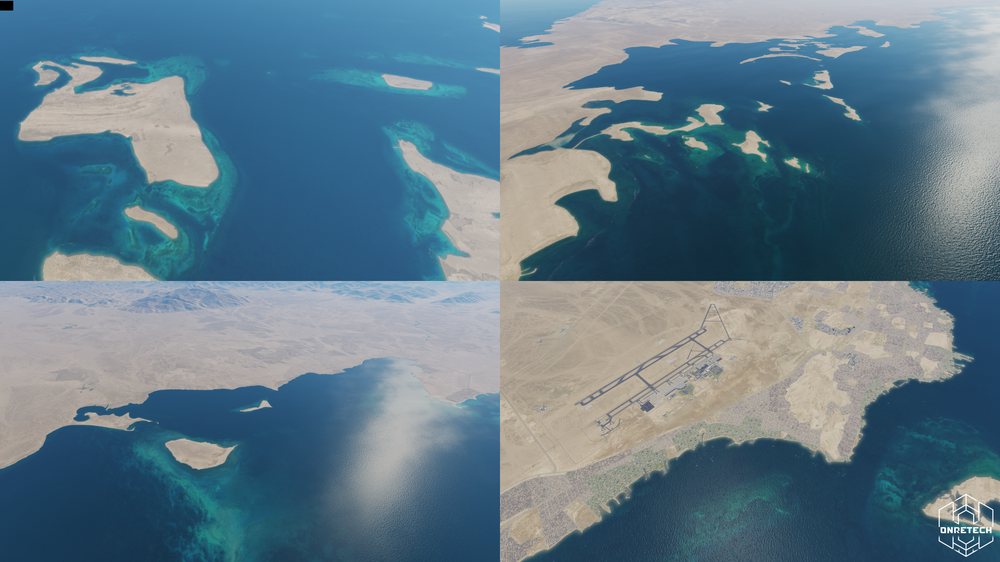
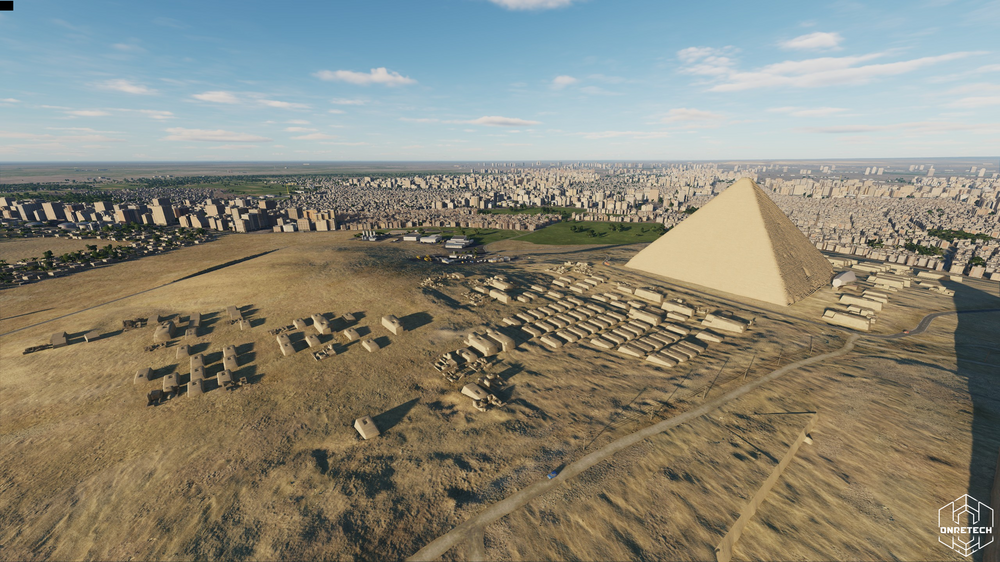
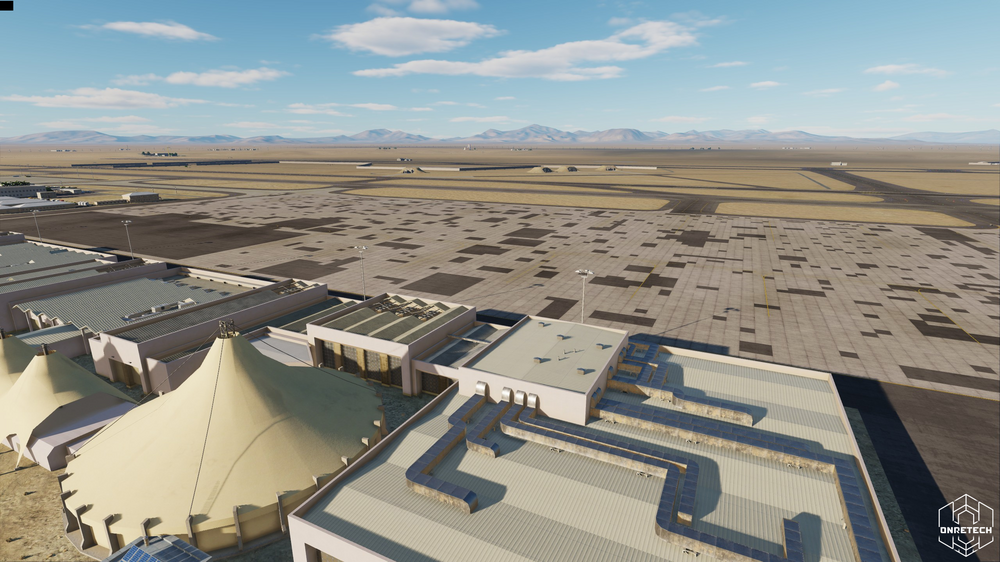
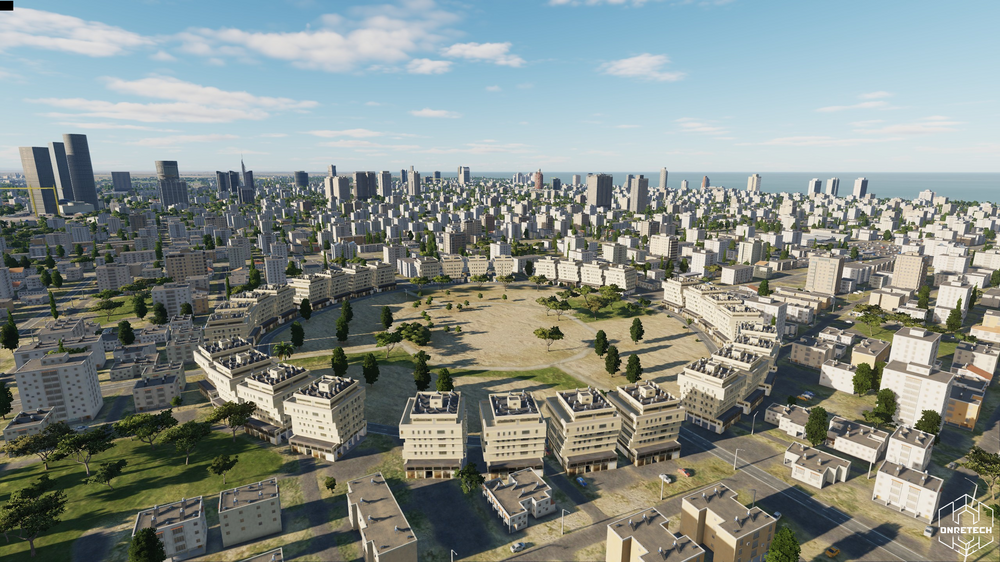
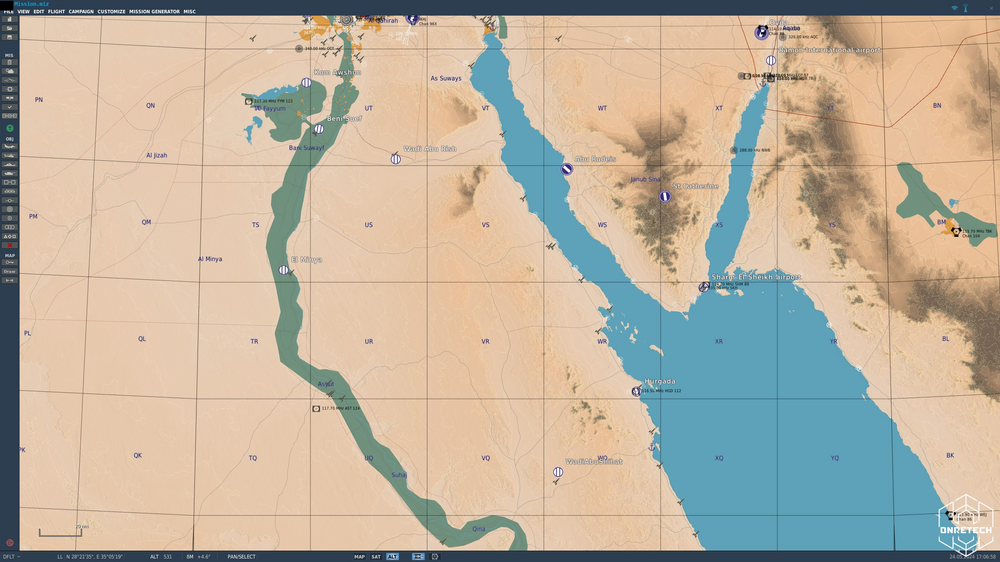
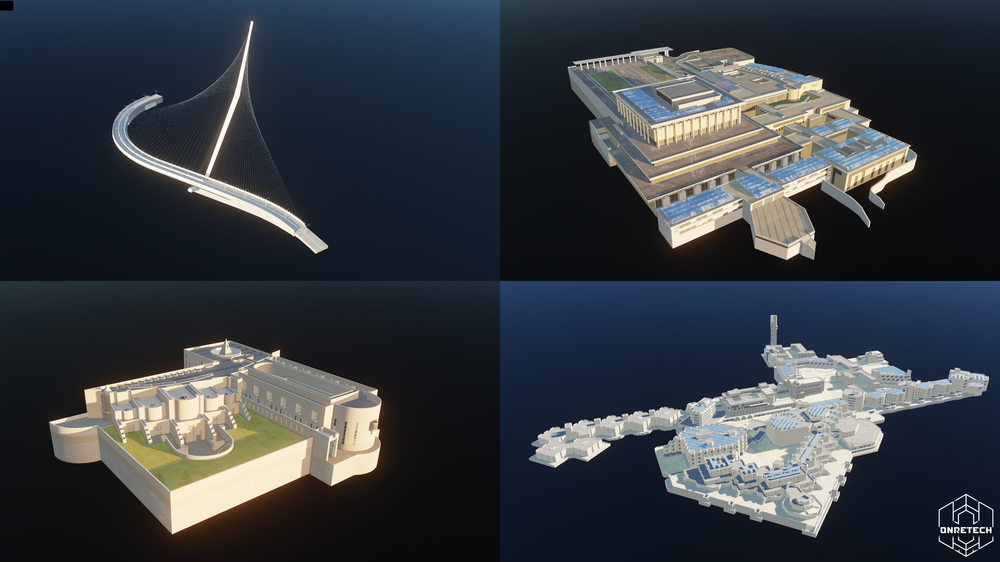
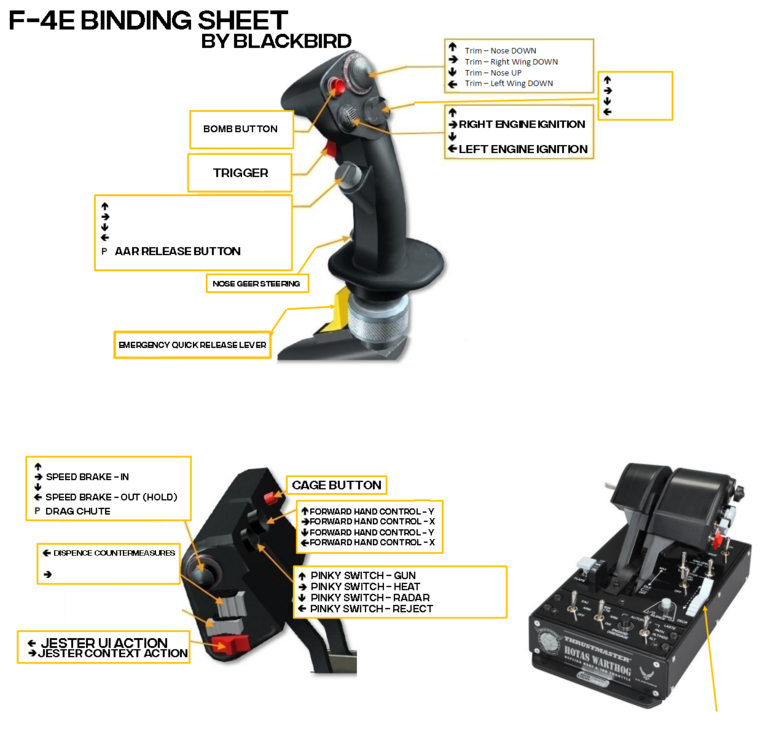


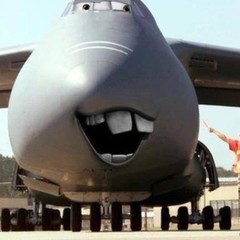
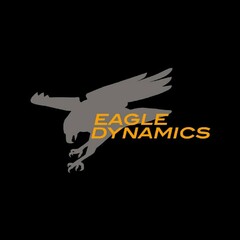
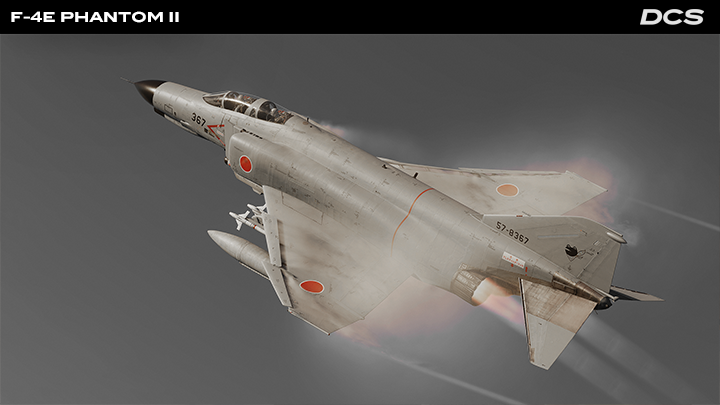
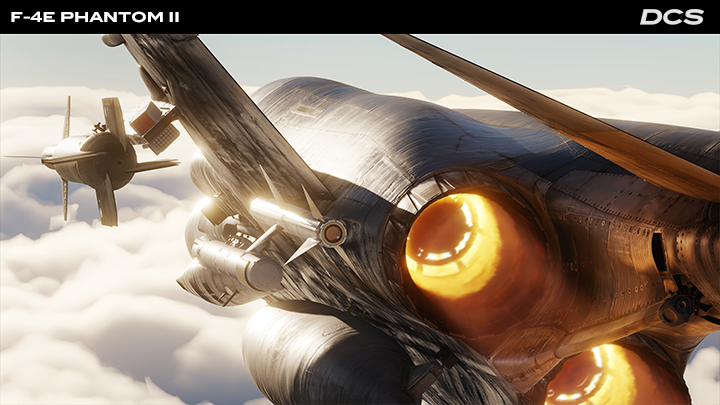
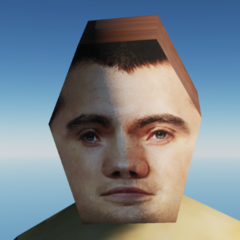


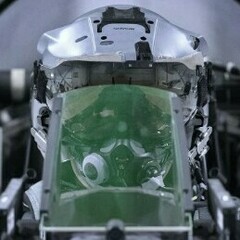


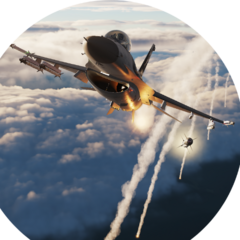
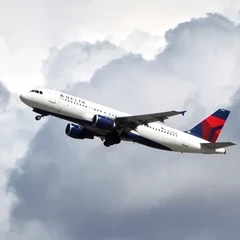


.thumb.png.223ba9210ac14097e0f247d4c12c5fd4.png)